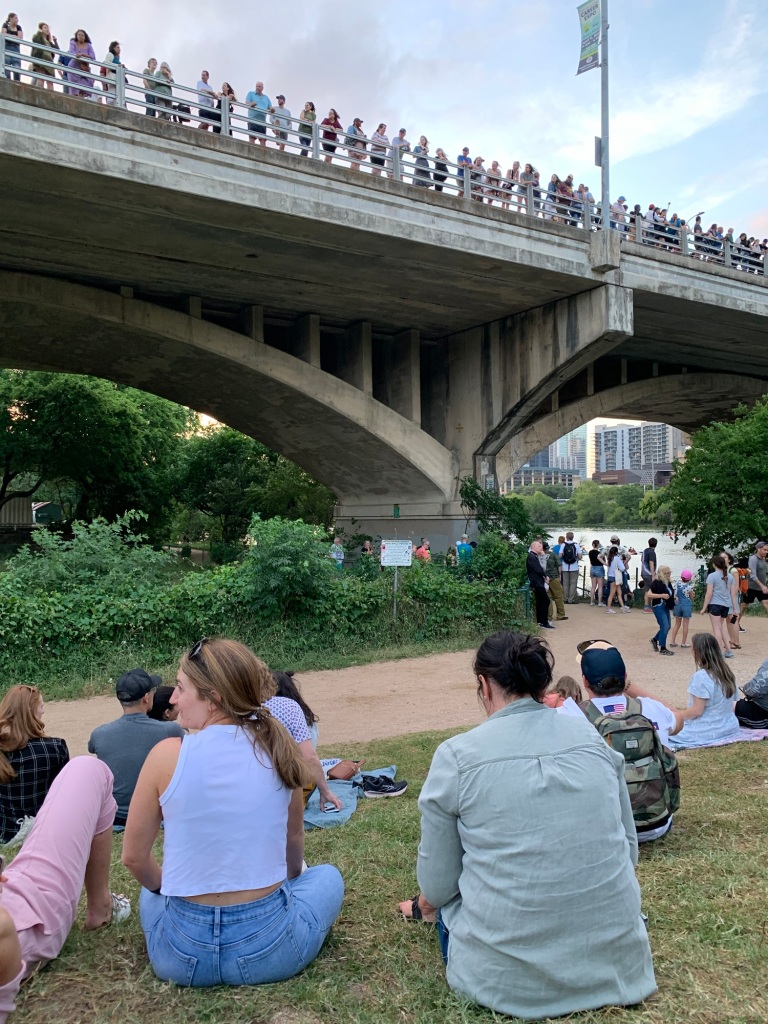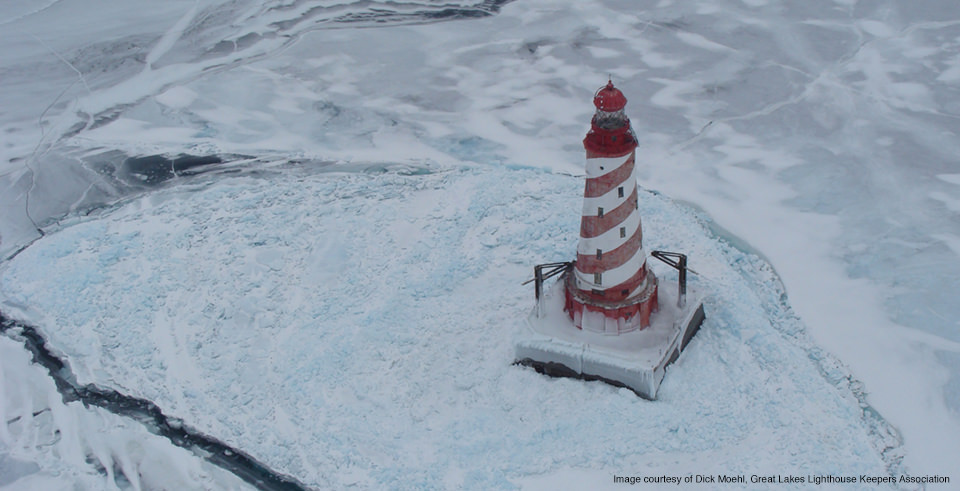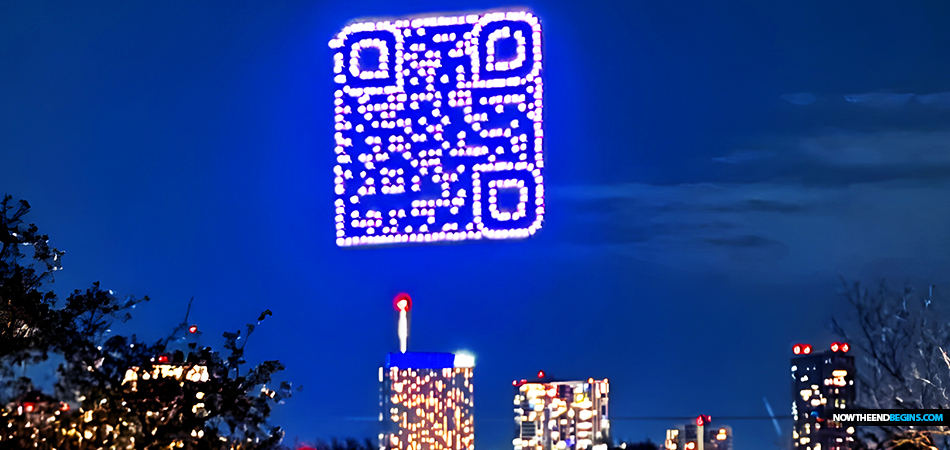
On our last night in Austin, we decided to check out a unique local form of entertainment: watching bats fly out from underneath the Congress Street bridge. The configuration of that bridge just happens to provide an ideal nesting spot for Mexican bats. Every night, at dusk or later–bats being nocturnal creatures–the bats emerge from their perches in those slots you see underneath the bridge and fly down the river to hunt insects.
And, because a swarm of bats flying out from under a bridge isn’t something you see every day, people started to come to view the spectacle. On Sunday night, bat enthusiasts lined the bridge, while we sat among a group of bat aficionados on a small hill facing the bridge. Boats on the river also gathered for a little bat viewing. It was a kind of carnival atmosphere, and as the designated time for sunset neared a great sense of anticipation took hold.
The sun fell and the skies darkened, and people around us kept predicting that the bats would emerge any moment–but instead it just got darker and darker, to the point where you couldn’t see much of anything, bats or otherwise. The Mexican bats aren’t huge creatures in any event, and they aren’t exactly designed by evolution to be highly noticeable at night. We saw a few bats flitting by on the other side of the bridge, framed against a lighted wall, but no large swarm.
It turns out that bats aren’t slaves to the clock, and will leave their roosts under the bridge at unpredictable times after sunset. In short, they come out when they’re good and ready. If they’re especially hungry, the swarm might fly out right after sunset, but if they’re not, they might cool their heels for an hour or two. And the bats don’t particularly care if the humans gathered to watch them are there are not. You’ve got to respect them for that.





























